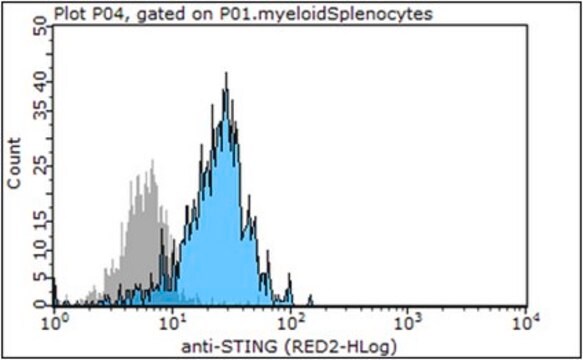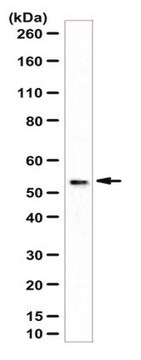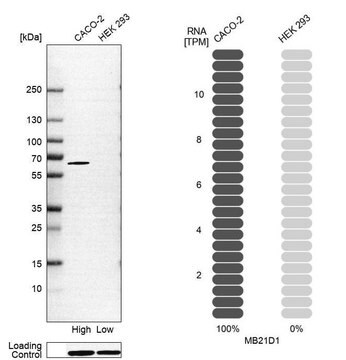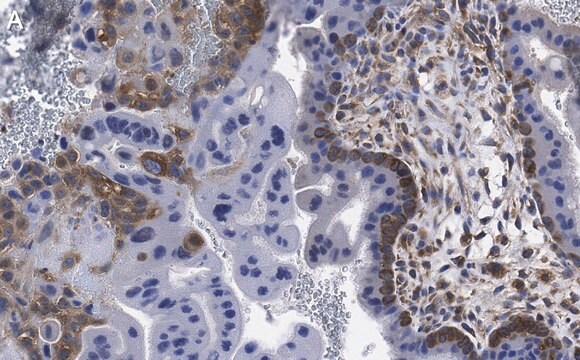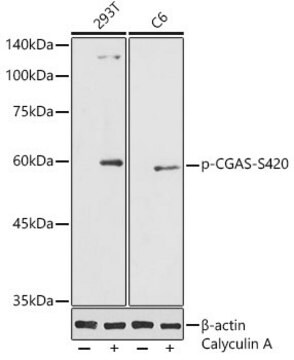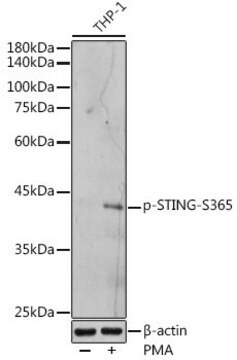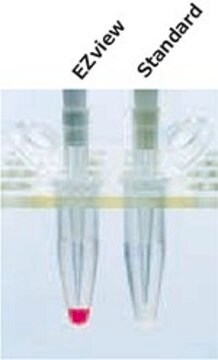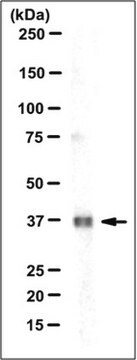MABF270
Anti-STING Antibody, clone S17G2C4B7
clone S17G2C4B7, from mouse
Synonyme(s) :
Stimulator of interferon genes protein, Endoplasmic reticulum interferon stimulator, ERIS, hMITA, hSTING, Mediator of IRF3 activation, Transmembrane protein 173
About This Item
Produits recommandés
Source biologique
mouse
Niveau de qualité
Forme d'anticorps
purified antibody
Type de produit anticorps
primary antibodies
Clone
S17G2C4B7, monoclonal
Espèces réactives
mouse, human
Technique(s)
immunocytochemistry: suitable
western blot: suitable
Isotype
IgG1κ
Numéro d'accès NCBI
Numéro d'accès UniProt
Conditions d'expédition
wet ice
Modification post-traductionnelle de la cible
unmodified
Informations sur le gène
human ... TMEM173(340061)
Description générale
Spécificité
Immunogène
Application
Inflammation & Immunology
Infectious Diseases - Viral
Immunocytochemistry Analysis: A 1:50 dilution from a representative lot detected the expression of exogenously transfected human and murine STING in HEK293T cells, as well as the endogenous STING in telomerase-immortalized human foreskin fibroblasts hTERT-BJ1 (Courtesy of Dr. Glen N. Barber, University of Miami School of Medicine, FL, U.S.A.).
Qualité
Western Blotting Analysis: 1.0 µg/mL of this antibody detected STING in 50 µg of HEK293T cell lysate.
Description de la cible
Forme physique
Stockage et stabilité
Autres remarques
Clause de non-responsabilité
Vous ne trouvez pas le bon produit ?
Essayez notre Outil de sélection de produits.
Code de la classe de stockage
12 - Non Combustible Liquids
Classe de danger pour l'eau (WGK)
WGK 1
Point d'éclair (°F)
Not applicable
Point d'éclair (°C)
Not applicable
Certificats d'analyse (COA)
Recherchez un Certificats d'analyse (COA) en saisissant le numéro de lot du produit. Les numéros de lot figurent sur l'étiquette du produit après les mots "Lot" ou "Batch".
Déjà en possession de ce produit ?
Retrouvez la documentation relative aux produits que vous avez récemment achetés dans la Bibliothèque de documents.
Notre équipe de scientifiques dispose d'une expérience dans tous les secteurs de la recherche, notamment en sciences de la vie, science des matériaux, synthèse chimique, chromatographie, analyse et dans de nombreux autres domaines..
Contacter notre Service technique